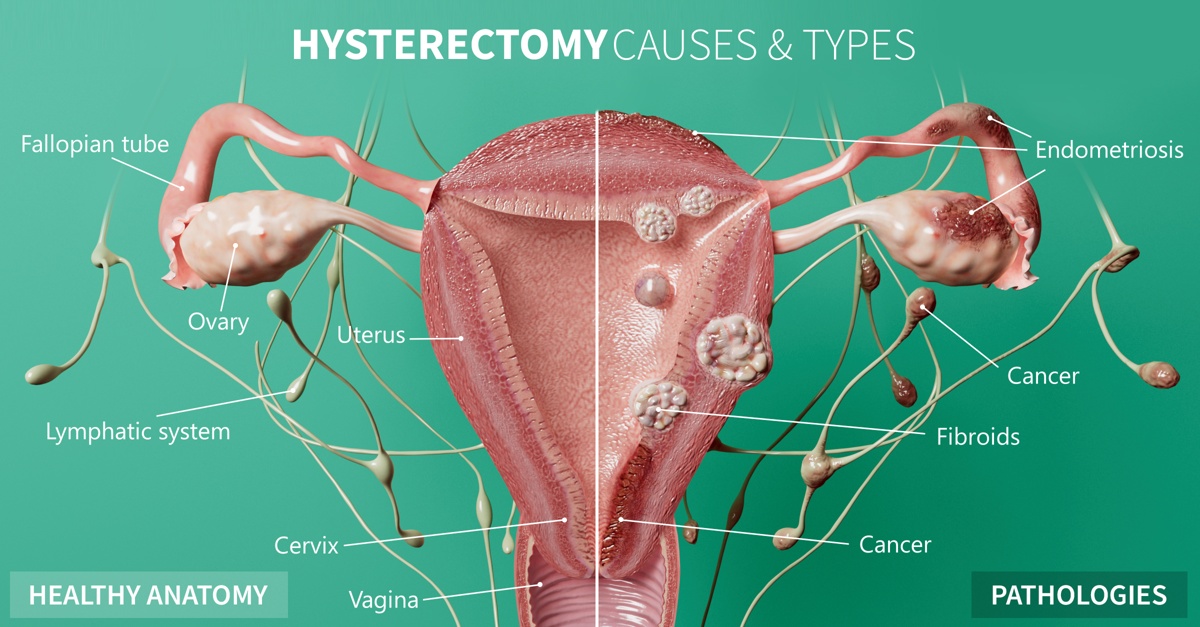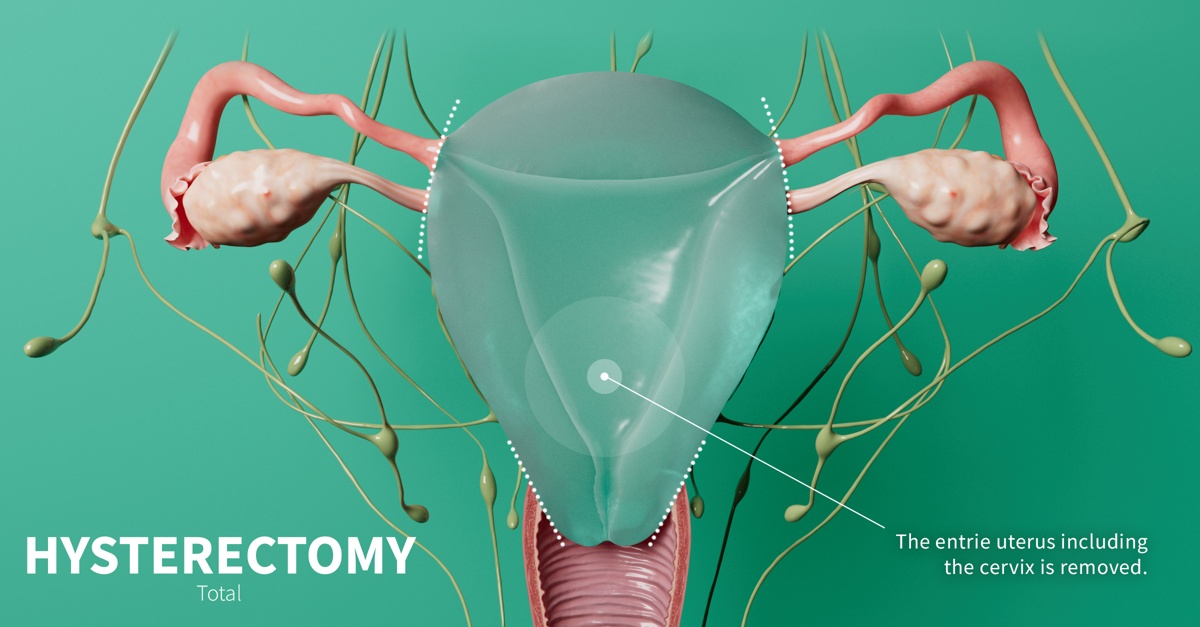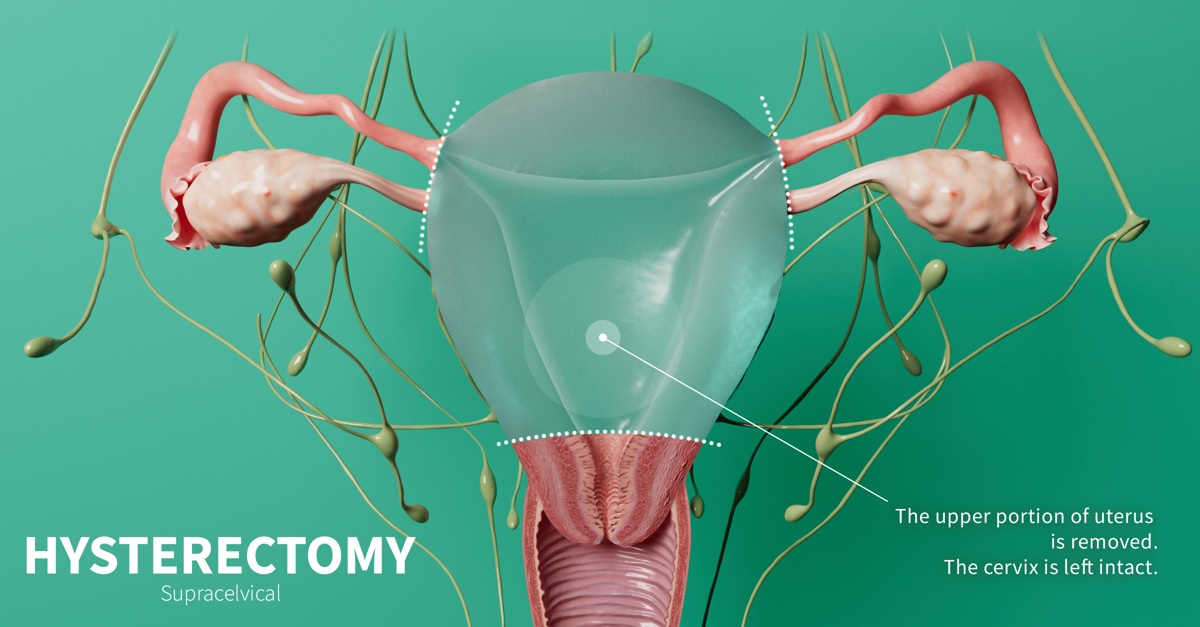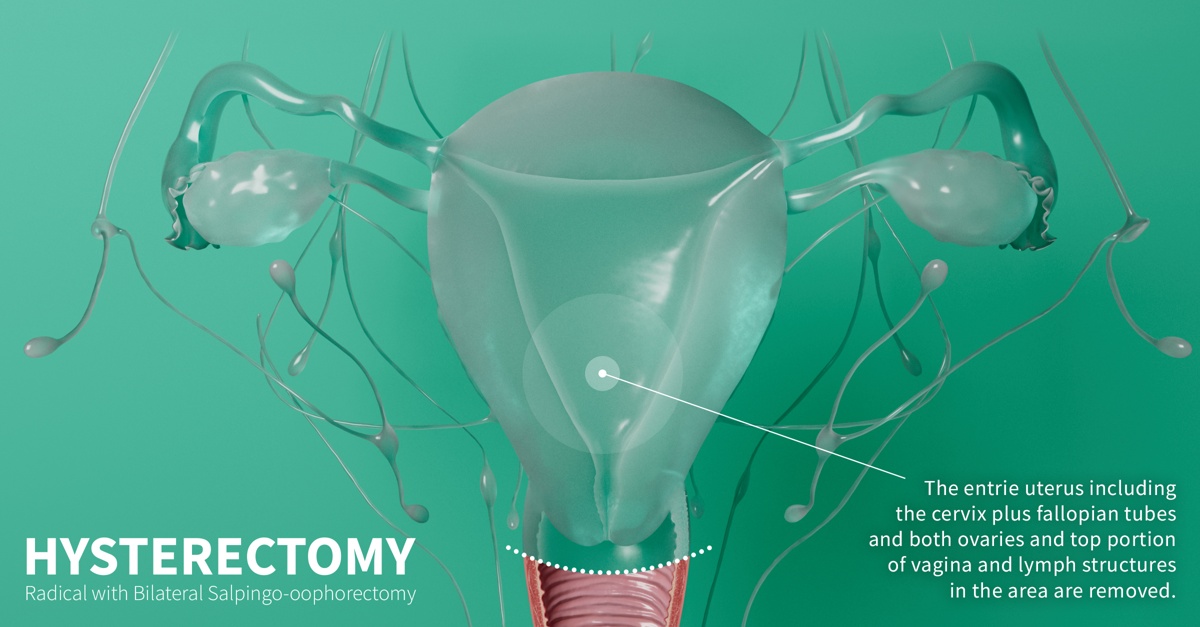
In terms of medical terminology “hyster” refers to the uterus and “ectomy” refers to the surgical removal of. Therefore, a hysterectomy is the removal of the uterus and most likely the cervix. Depending on the circumstances other tissues may also be removed in this procedure. In this post we will focus in on the four different types of hysterectomy.

Total hysterectomy: This procedure involves removing the uterus and cervix but leaving the ovaries.

Supracervical hysterectomy: In this case, just the upper part of the uterus is removed. The cervix and ovaries remain.

Total hysterectomy with bilateral salpingo-oophorectomy: The uterus, cervix, fallopian tubes, and ovaries are removed. When removing the ovaries, this can stimulate menopause if not already experienced.

Radical hysterectomy with bilateral salpingo-oophorectomy: This is the removal of the uterus, cervix, fallopian tubes, ovaries, the upper portion of the vagina and some of the surrounding lymph nodes. This is the most common type of procedure when cancer is involved.
Around 300,000 people with uteruses get hysterectomies in the US each year. It is the second most common surgery performed among such people. There are numerous reasons for carrying out this procedure, but here are just a few…
- Abnormal heavy vaginal bleeding that isn’t managed by other treatments
- Cervical or uterine cancer, or abnormalities that may lead to cancer
- Conditions such as hyperplasia, recurrent uterine polyps or adenomyosis
- Severe pain with menses that is not managed by other treatments
- Noncancerous tumors called leiomyomas or uterine fibroids
A hysterectomy can be performed in several different ways. An incision through the vagina may be performed, laparoscopic or robotic-assisted laparoscopic surgery may be performed, or an incision may be made through the abdomen. After the procedure the patient will no longer have the ability to carry a fetus and will no longer experience a menstrual cycle (if they have not experienced menopause already).
Check out the urogenital system in the female model in Complete Anatomy to see more detail.